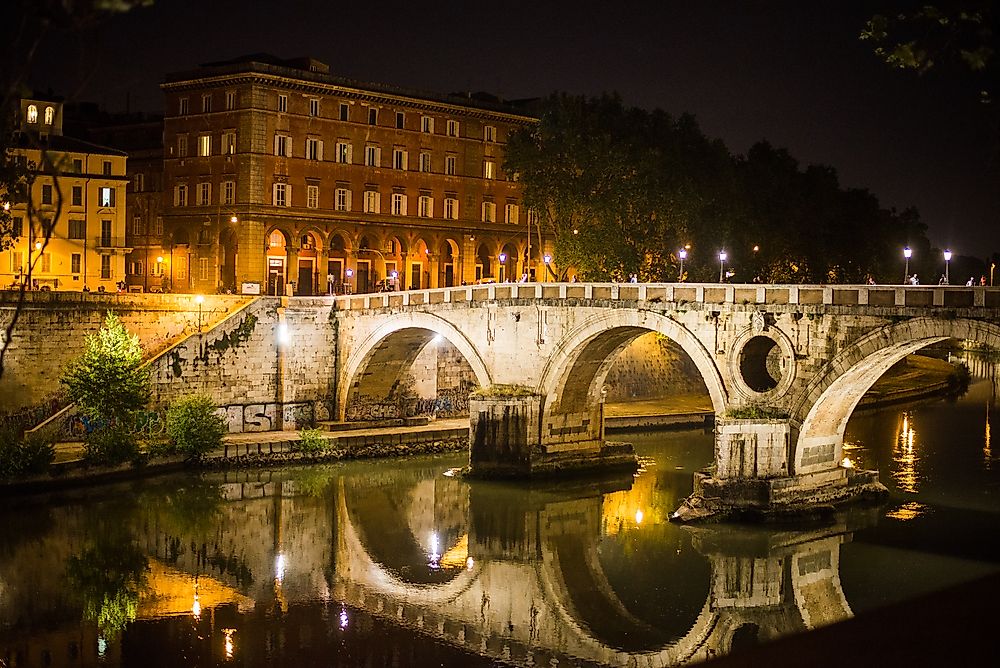Battle of the Milvian Bridge: The Battle that Helped Establish Christianity

The Battle of the Milvian Bridge was fought between Constantine and Maxentius on October 28, 312. The battle was named Milvian Bridge after a significant bridge on River Tiber where the battle took place. The battle was won by Constantine leading to the end of Tetrarchy and making him the overall ruler of the Roman Empire. His rival, Maxentius, died while trying to swim across River Tiber during the battle. The battle also marked the conversion of Constantine to Christianity. A monument which attributes Constantine’s success to divine intervention has been erected in his honor.
5. Makeup of the Forces
The Battle of the Milvian Bridge was fought between Constantine’s army and that of Maxentius. Constantine’s army was made up of the British and the Gallic while Maxentius’ army was generally drawn from Rome. Constantine had a relatively smaller army which was drawn from Europe, with Praetorian and Imperial Horse Guards, and an army he had inherited from Severus who has been captured and executed by Maxentius. Maxentius, on the other hand, had a strong army of about 100,000 soldiers including some of Severus’ men who had defected upon his capture and execution, and the Roman soldiers who were serving the emperor.
4. Background
The battle was as a result of struggle to replace Diocletian. Diocletian’s successors began to fight for the control of the Roman Emperor as soon as he stepped down on May 1, 305. Constantine was the son of the Western Emperor Constantius. However, Tetrarchic ideologies did not have a provision for his hereditary succession. Maxentius who was favored in Rome became the emperor on October 28, 306. Constantine also held claim to the emperor’s seat but avoided conflict with Maxentius who was also his brother-in-law. By 312, the two were engaged in open hostility leading to Constantine’s gathering of his troops to oust Maxentius.
3. Description of the Engagement
Believing to be the deserving emperor of the Western Roman Empire, Constantine gathered his army and prepared for the invasion of Rome in the spring of 312. On the evening of October 27, 312, Constantine had a vision from the Christian God asking him to put a heavenly sign on the shields of his soldiers. He obeyed the command and marked the shields with the sign of “Christ.” Constantine camped at Malborghetto near Prima Porta where an arch in honor of the occasion still exists. Maxentius was expected to remain in the city since he had stocked food in preparation for such an event. However, having been convinced that he would win the battle, Maxentius encamped at the Milvian Bridge. On October 28, 312, the two armies clashed with Constantine winning the battle. The Milvian Bridge collapsed with several soldiers drowning and the stranded ones captured or slaughtered. Maxentius drowned while he was trying to swim across Tiber River to escape the battle.
2. Outcome
Constantine and his army inflicted heavy losses on Maxentius and his army during the Battle of the Milvian Bridge. Several of Maxentius' soldiers were either captured or slaughtered after the collapse of the Milvian Bridge. On October 29, 312, Constantine made a triumphant entry into Rome and was met with jubilation and cheers. Maxentius’ body was fished out of Tiber River and paraded throughout the city for all to see. Constantine gained control of the western half of the Roman Empire.
1. Historical Significance and Legacy
With Maxentius dead, Constantine consolidated his dominance over the Western Roman Empire expanding his territories to include the entire Roman Empire by 324. Maxentius was vilified as a crude and incompetent tyrant. His death in the battle paved way for the growth of Christianity which became a dominant religion for the Roman Empire and the entirety of Europe. In 313, an Edict of Milan was issued by Constantine making Christianity an officially recognized religion in the Roman Empire.











